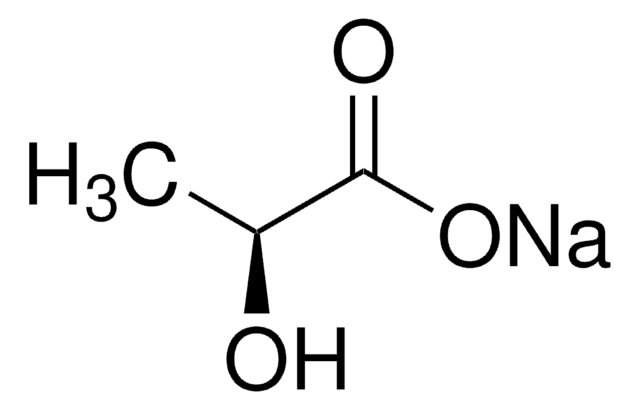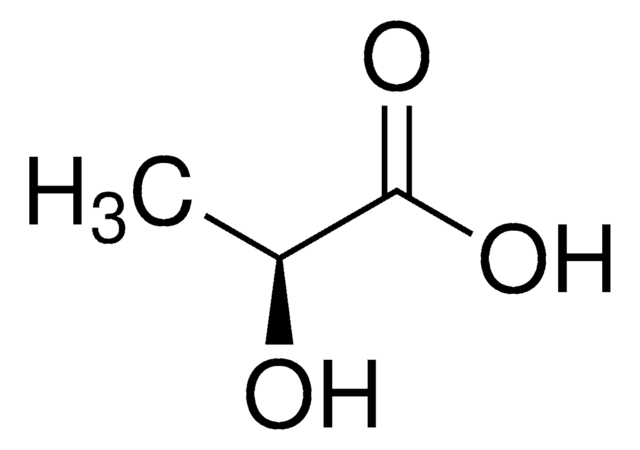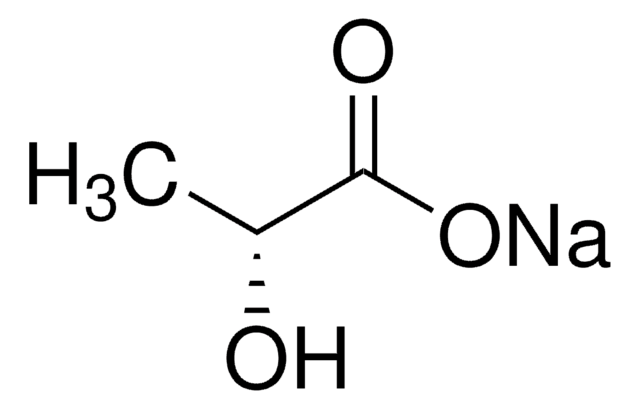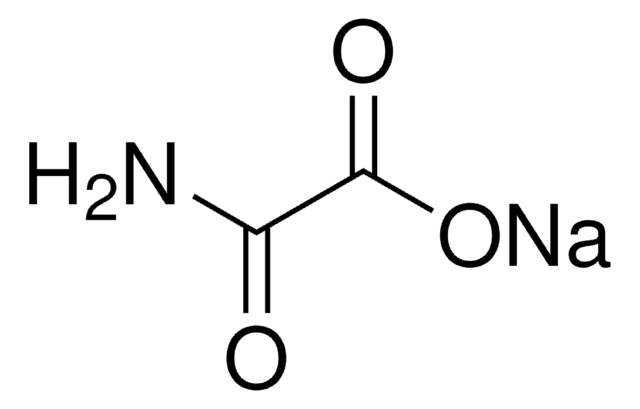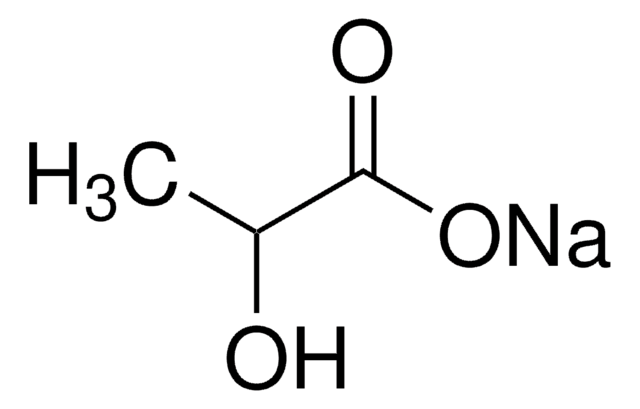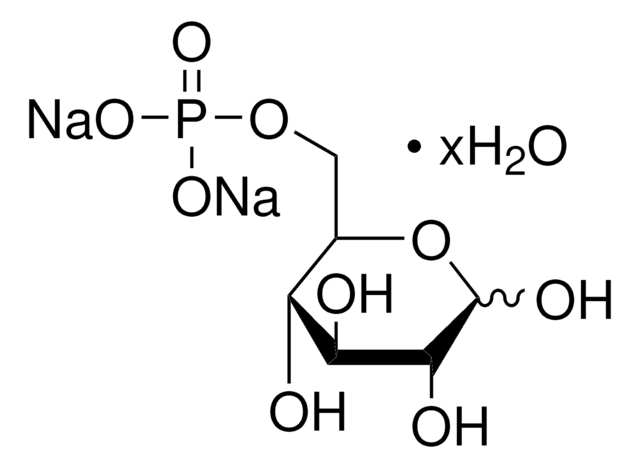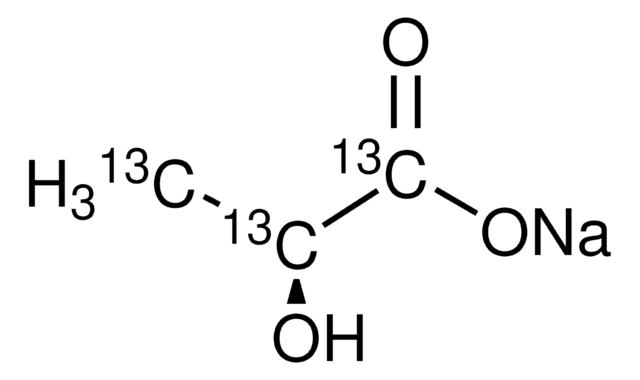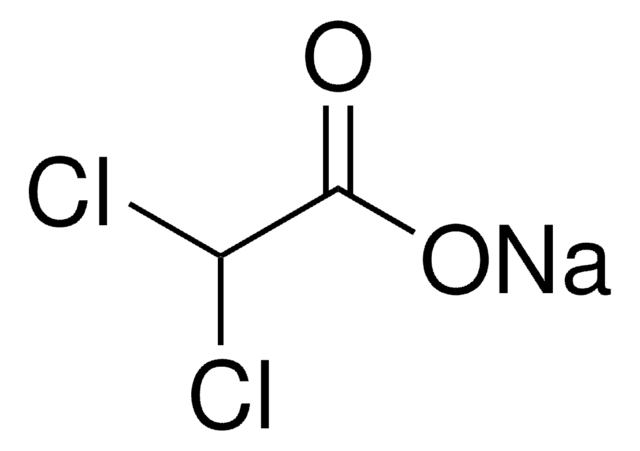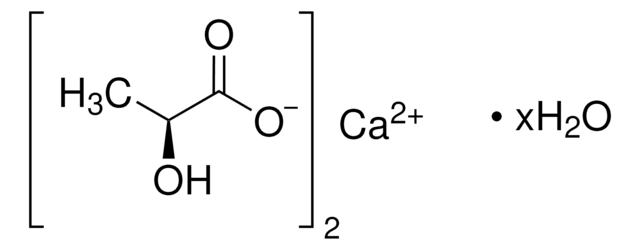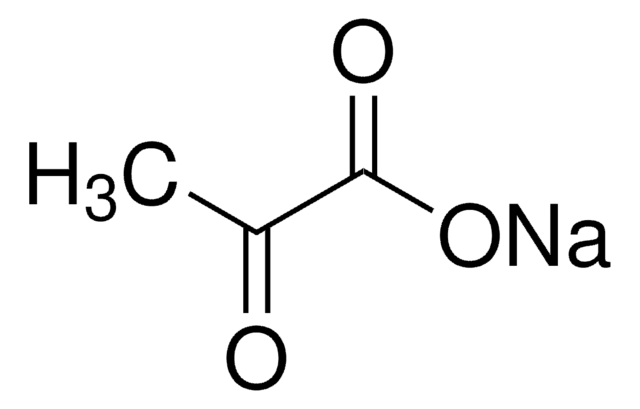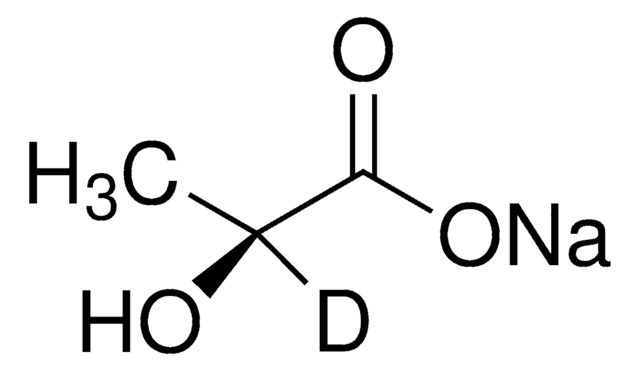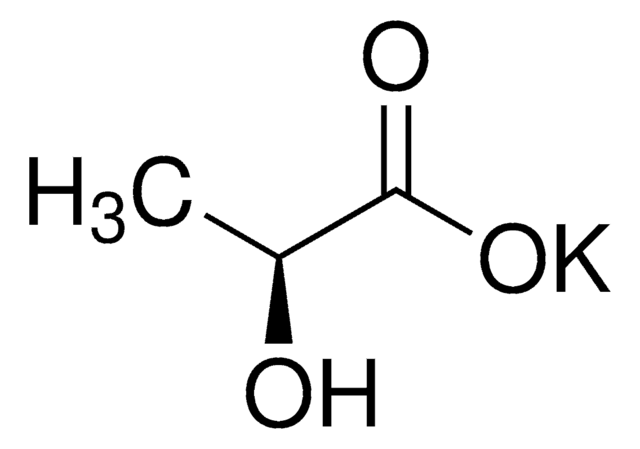71718
Sodium L-lactate
≥99.0% (NT)
Synonym(s):
(S)-2-Hydroxypropionic acid sodium salt, L-Lactic acid sodium salt, Sarcolactic acid sodium salt
About This Item
Recommended Products
Quality Level
assay
≥99.0% (NT)
form
solid
optical activity
[α]20/D −12.5±0.5°, c = 1% in H2O
optical purity
enantiomeric ratio: ≥97.0 (enzymatic)
impurities
≤1% water
mp
163-165 °C (lit.)
storage temp.
2-8°C
SMILES string
[Na+].C[C@H](O)C([O-])=O
InChI
1S/C3H6O3.Na/c1-2(4)3(5)6;/h2,4H,1H3,(H,5,6);/q;+1/p-1/t2-;/m0./s1
InChI key
NGSFWBMYFKHRBD-DKWTVANSSA-M
Looking for similar products? Visit Product Comparison Guide
Related Categories
General description
Application
- Reagent for the dissolution of calcium D-gluconate.
- Crystallizing agent in the synthesis of Sn-containing silicate catalysts.
- Chiral building block to prepare chiral pyrrolidine intermediate, which is further used to synthesize chiral pyrrolidinium ionic liquids.
- Mild reducing agent in the selective reduction of CuO into Cu nanorods.
Storage Class
11 - Combustible Solids
wgk_germany
WGK 1
flash_point_f
Not applicable
flash_point_c
Not applicable
ppe
Eyeshields, Gloves, type N95 (US)
Certificates of Analysis (COA)
Search for Certificates of Analysis (COA) by entering the products Lot/Batch Number. Lot and Batch Numbers can be found on a product’s label following the words ‘Lot’ or ‘Batch’.
Already Own This Product?
Find documentation for the products that you have recently purchased in the Document Library.
Customers Also Viewed
Our team of scientists has experience in all areas of research including Life Science, Material Science, Chemical Synthesis, Chromatography, Analytical and many others.
Contact Technical Service